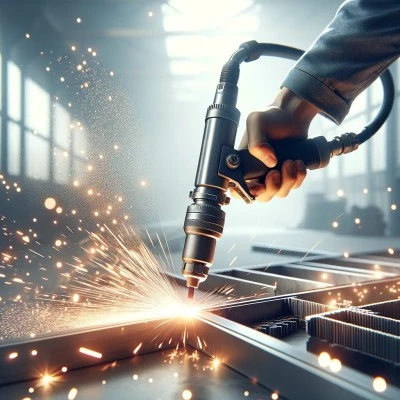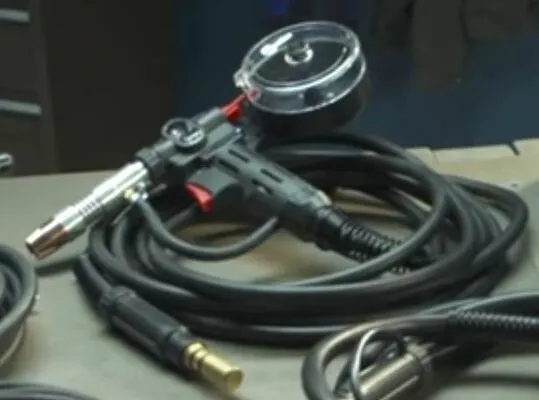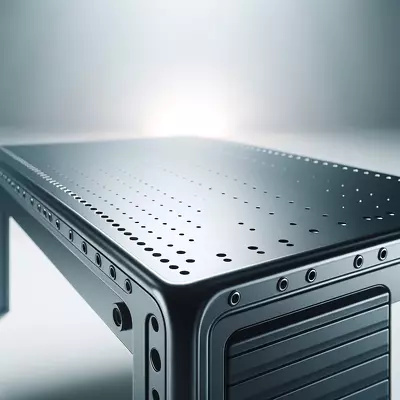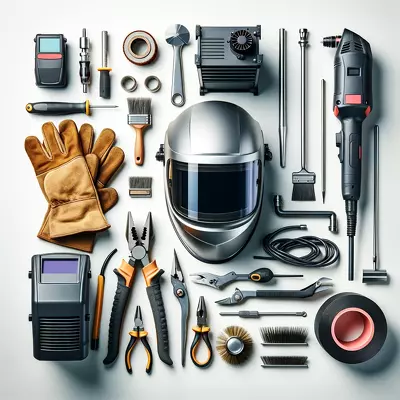Illuminating the Art of Metal Crafting: A Comprehensive Plasma Cutters Review

Precision and efficiency are paramount in metal fabrication. One tool that has revolutionized this industry is the plasma cutter, a device known for its ability to slice through metal with remarkable accuracy. As technology advances, a myriad of models have emerged, each boasting unique features and capabilities. This article aims to dissect and evaluate these tools, guiding you to make an informed decision tailored to your specific needs.
As an Amazon Associate, we earn a commission from qualifying purchases.
I. Introduction
Precision in metal fabrication is not just a requirement but the backbone of quality and efficiency in the industry. This accuracy is crucial whether you’re crafting intricate components for machinery or creating bespoke artistic metalworks. The evolution of plasma cutters represents a significant leap in this domain. These tools have transformed the landscape of metal fabrication, introducing a level of precision and efficiency that was previously unattainable.
II. Understanding Plasma Cutters
Plasma cutters work by sending an electric arc through a gas passing through a constricted opening. The gas can be air, nitrogen, argon, etc. This process increases the gas’s temperature to the point where it enters the fourth state of matter, plasma. The plasma is hot enough to melt the metal being cut and moves sufficiently fast to blow molten metal away from the cut.
Plasma cutters offer substantial advantages over traditional cutting methods like oxy-fuel cutting. They are faster, more precise, and can cut through a variety of conductive metals, including stainless steel, aluminum, and copper. Moreover, plasma cutters don’t require the metal to be preheated, making them much quicker to start and operate.
Key features to consider when purchasing a plasma cutter include the thickness of metal it can cut, the cutting speed, the duty cycle (the amount of time it can operate without cooling down), and the type of electrical input it requires.
III. Detailed Plasma Cutters Review
A. BestArc 7th Generation 50Amp 110/220V
- Features and Specifications
The BestArc 7th Generation is a versatile cutter with a 50Amp output, compatible with both 110V and 220V inputs. It comes with a digital screen displaying vital parameters like air pressure, voltage, and current, ensuring precise control during operation. - User Experience and Review Highlights
Users appreciate its “Best Bang for the Buck” reputation, noting its exceptional value and performance. The newer version’s return to a 220-240vac plug/cord with a 110-120vac adapter has been well-received for its convenience. However, the shift from an analog to a digital air pressure gauge has received mixed reviews, with some users preferring the traditional analog gauge for visualizing the dynamic pressure changes during cutting.
B. Hypertherm Powermax45
- Features and Specifications
The Powermax45 is known for its power and performance. It can cut through 1/2” steel at 20 inches per minute without needing a cool-down period. This high-end machine also offers complete torch control, neat and precise cuts, and is economical in terms of consumable use. - User Experience and Review Highlights
Users highlight the Powermax45’s long-term savings despite its higher initial cost. Its durability and the affordable cost of consumables make it a favorite. It’s ideal for a broad spectrum of applications. It is praised for its lightweight and portability, controllable amperage output, and the ability to perform different types of cuts, including continuous and non-continuous pilot arc and gouging.
C. Miller Spectrum 625 X-Treme
- Features and Specifications
The Spectrum 625 X-Treme is compact and portable. It stands out for its auto-refire technology, which adjusts the pilot arc based on the specific metal you’re cutting, and its automatic air pressure adjustment feature. These features simplify the cutting process and make the machine particularly useful for onsite cutting. - User Experience and Review Highlights
Users note the machine’s convenience and ease of use, making it suitable for both industrial and hobbyist applications. While the price is on the higher side, the quality, compactness, and advanced technology of the Miller Spectrum 625 X-Treme justify the investment. However, some users suggest that the torch lead could be longer for enhanced usability.
IV. Factors to Consider When Choosing a Plasma Cutter
When selecting a plasma cutter, it’s essential to consider the material type and thickness you’ll be working with. Cutters have varying capacities, and choosing one that matches your most common materials will ensure efficiency and longevity. Cutting speed and precision are also critical, as they affect the quality of your work and productivity. Lastly, consider the ease of use and portability, especially if your projects require you to move the machine around frequently or work in different locations.
Selecting the right plasma cutter is about balancing these factors against your specific needs and the demands of your projects. Whether you’re a professional metal fabricator or a hobbyist, the right tool can make all the difference in your work’s quality, efficiency, and enjoyment.
V. FAQs
Q: What factors should I consider when selecting a plasma cutter?
A: Consider the material type and thickness you will be cutting, the cutter’s precision and speed, its ease of use, and whether you need a portable model.
Q: Can plasma cutters cut through any metal?
A: Plasma cutters are very versatile and can cut through most conductive metals, including stainless steel, aluminum, and copper. However, their effectiveness can vary based on the specific type of metal and its thickness.
Q: How does the thickness of the metal affect the choice of plasma cutter?
A: The thickness of the metal you intend to cut dictates the amperage requirement of the plasma cutter. Thicker materials require a cutter with a higher amperage rating.
Q: Are there any safety precautions I should take when using a plasma cutter?
A: Yes, always wear appropriate safety gear, such as gloves and eye protection. Ensure your work area is well-ventilated, and be aware of your surroundings to avoid accidents.
Q: How do I maintain my plasma cutter?
A: Regularly check and replace consumables like electrodes and nozzles, keep the cutter clean from dust and debris, and ensure proper grounding for safety and optimal performance.
Q: What welder should I buy?
A: The choice of welder depends on the type of projects you undertake, the materials you work with, and your proficiency level. Research different types, like MIG, TIG, or stick welders, to find one that suits your needs.
Q: What are some reputable MIG welder brands?
A: Some well-known MIG welder brands include Miller Electric, Lincoln Electric, Hobart, and ESAB. Each brand has its strengths, so consider the specific features and support that meet your requirements.
VI. Conclusion
A. Best Offer
The Hyperterm Powermax45 stands out for its durability, economical consumable use, and versatility across a wide range of applications. Its ability to make clean, precise cuts and its reputation for long-term savings make it a top recommendation.
B. The Alternative
For those looking for a more portable option, the Miller Spectrum 625 X-Treme is an excellent choice. Its compact size, ease of use, and advanced auto-refire and air pressure adjustment technologies make it ideal for both industrial and hobbyist applications.
VII. Suggested Readings
Before diving into your next metal fabrication project, consider enriching your knowledge with some insightful reads. Here are five recommended books that cover various aspects of plasma cutting and metal fabrication:
- “Plasma Cutting Handbook HP1569” by Eddie Paul: This guide, with a foreword by Jay Leno, offers a comprehensive look into plasma cutting, including basic, advanced, and CNC cutting procedures.
- “Plasma Cutting Handbook: Operation, Tips, Safety” by Eddie Paul: A definitive source for DIYers, providing step-by-step instructions and tips on plasma cutting, penned by auto body expert Eddie Paul, ensuring top-notch guidance for serious car builders and hobbyists alike.
- In addition to these specialized books, consider exploring other resources that delve into welding techniques, metal fabrication, and project design. Expanding your knowledge base can significantly enhance your skills and the quality of your work.
After enriching your understanding with these reads, you’ll be better equipped to tackle your projects with confidence and precision, ensuring that each cut and weld contributes to a masterpiece of metalwork.






